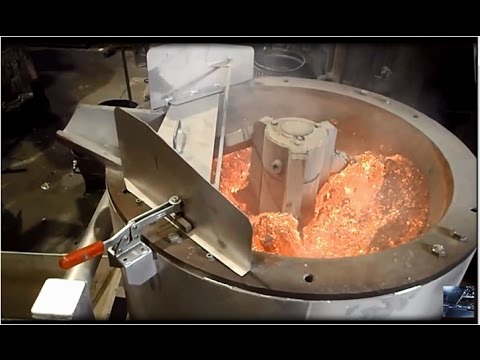
Originally called 'Alloy 61S', it was developed in 1935. In addition to being the most abundant metal, it also happens to be one of the most economical. 6061 aluminium alloy ( Unified Numbering System (UNS) designation A96061) is a precipitation-hardened aluminium alloy, containing magnesium and silicon as its major alloying elements. Because of its highly recyclable nature, aluminium can be melted and reused over and over without any wastage. Melted aluminium can be moulded and used to make the same or different products. Other factors that could affect the melting point of aluminium and other substances include the composition of the molecules, how tightly the atoms are packed together and if pressure is applied during the heating process. If the melting point varies by more than five degrees Celsius that’s proof that there are impurities. If the aluminium is pure, the melting point range varies within one or two degrees Celsius. This is called a melting point depression. There’s also a chance that it will vary over a wide temperature range. If the aluminium has impurities in it, the melting point is higher.

But, depending on various aspects, the melting point of aluminium can change. The above-stated melting point is when all factors are constant. Factors affecting the melting point of aluminium The more the melting point range decreases, the purer the substance. When recycling aluminium, if it has a vast melting range, that means it has more impurities. The toughness of alumina can be improved by the. the highest rating being 10), and high melting point (approximately 2,050 ☌, or 3,700 ☏). The melting point also helps to identify the general purity of the metal. Alumina, synthetically produced aluminum oxide, Al2O3, a white or nearly colourless crystalline substance that is used as a starting material for the smelting of aluminum metal. Identifying the melting point of aluminium helps to identify impurities in the metal or to identify other unknown substances. The melting point of aluminium or any other substance for that matter is a crucial physical property. Why is it important to determine the melting point of aluminium? The melting of aluminium is vital in the recycling process.

The melting and boiling points of aluminium are important factors considering the metal has exceptional recycling properties and can be used in various ways without any wastage.

In relation to melting, aluminium has a boiling point of approximately 2467 degrees Celsius. This is why the extraction of aluminium from aluminium oxide is done through electrolysis before the metal is melted. Aluminium oxide melts at about 2,000 degrees Celsius. The melting point of aluminium oxide is higher than the pure form of aluminium. In its pure form its melting point is recorded at approximately 660 degrees Celsius or 1220 degrees Fahrenheit. At what temperature does aluminium melt?Īluminium has a lower melting point compared to other metals like copper, iron and brass. Its ability to resist corrosion and be recycled are key attributes. It has a number of uses which include being used for cookware, industrial applications, in construction, transportation and aerospace. Aluminium is one of the most abundant metals in the earth's crust.


 0 kommentar(er)
0 kommentar(er)
